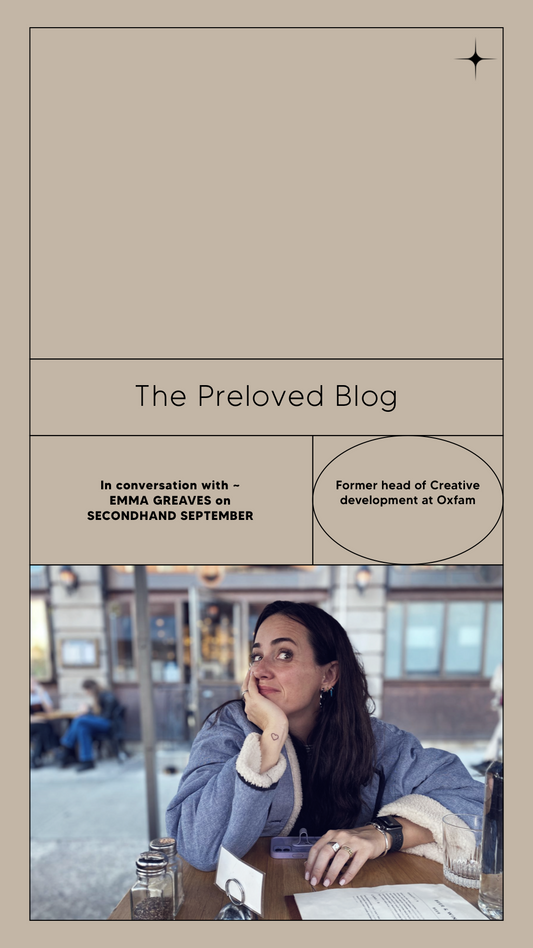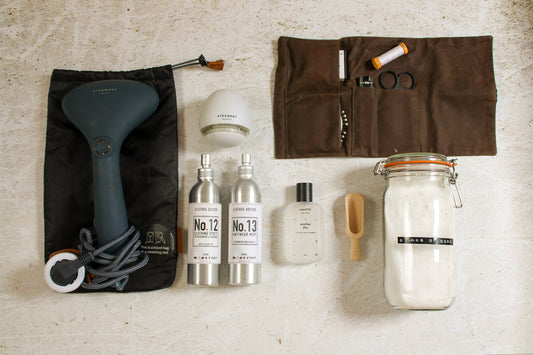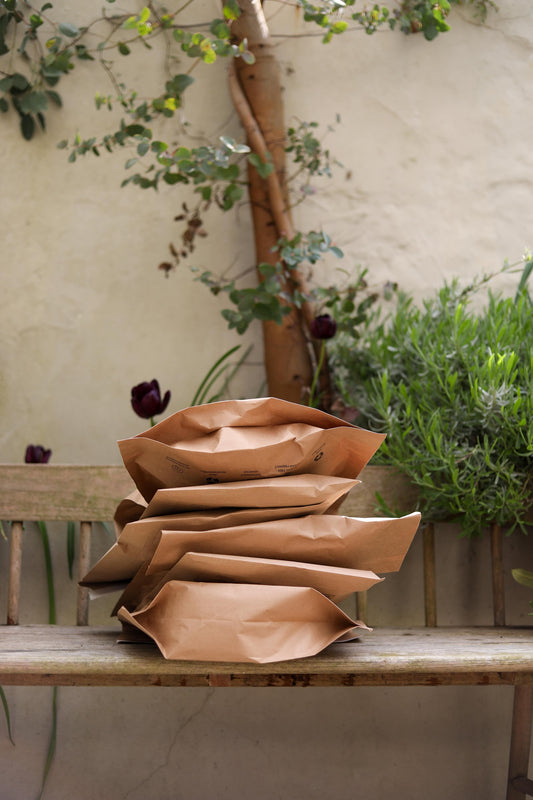We are thrilled to be chatting to Emma Greaves, Former Head of creative development at Oxfam, who also happened to be the creative brains behind the Second-hand September campaign.
What inspired the creation of the campaign for Second-hand September?
Oxfam was such an inspiring place to work. One day I might be working on climate change and then the next on editorial fashion shoots for major magazines and supplements. The variety was incredible – from specific projects like solar lighting in refugee camps in Bangladesh to the bigger global picture and the need to change the systems that keep people living in poverty.
Working in that environment, the climate emergency felt very real and very close. Yet outside of work, in everyday life in the UK, I often felt the disconnect— the shopping, consuming, living normally, without always recognising how our choices ripple out across the world. The scale of the problem can feel overwhelming, like nothing we do individually matters.
Around that time, I read an article about young people moving away from fast fashion. At the same time, we were discussing how to engage people who weren’t already involved in climate activism and how to raise awareness of Oxfam shops at the end of summer. The idea for Second-hand September just clicked—it felt obvious, and when I pitched it, it felt obvious to everyone else too. I often call it “my idea,” but really it belongs to all of us. It was born at a moment when the cultural tide was turning towards vintage and secondhand.
What were the main goals when the campaign first launched? And did they change once it was launched?
In 2019, people loved challenges like Movember and Stoptober. We wanted to create something with that same spirit—fun, accessible, but with a meaningful impact. The goal was to encourage people to “say no to new” for a month, sign up, and start discovering the value of charity shopping. Hopefully, they’d fall in love with secondhand for life.
The campaign launched at Glastonbury, got huge media coverage, and in the first year alone more than 60,000 people signed up—saving the equivalent emissions of driving a car around the world 200 times. And of course, many more joined in without ever officially signing up.
Did you expect Second-hand September to become such a movement beyond Oxfam?
That was always my dream! Second-hand September gave people “permission” to shop secondhand, and one of our early slogans was “Say Yes to Less.” Of course, people used it as a reason to shop too—but in a more thoughtful and sustainable way. I think that balance is what helped it grow beyond Oxfam.
Do you think the campaign has had an impact on consumer behaviour?
I think the shift towards secondhand was already on the horizon, but I like to think the campaign helped accelerate it. By making secondhand feel exciting, stylish, and aspirational—with pop-ups in Selfridges and support from people like Stella Tennant and Michaela Coel—we helped it feel culturally relevant and cool.
Have you seen any real change in fast fashion consumption during Second-hand September?
It’s tricky to measure, but the campaign definitely raised awareness of the environmental impact of fast fashion. Even if people didn’t completely give it up, many started mixing secondhand into their wardrobes. For me, that shift in mindset is just as important—it’s about creating long-term habits, not just short-term challenges.
What do you think are some of the biggest challenges in encouraging people to buy second hand?
The sheer speed and convenience of online shopping makes it tough to compete. Platforms like TikTok make it effortless to buy, with constant product recommendations and super-fast delivery. It’s seductive—and somehow feels different from fast fashion brands like Shein or Temu because it's 'normal' people selling it from their living rooms- when in actual fact it's the same. Helping people see the difference, and making secondhand feel just as easy and exciting, is the real challenge.
What strategies have worked best to engage people and get them excited about Second-hand September?
Making secondhand feel fun, easy, and desirable. It’s not about guilt or shame—it’s about the thrill of finding something unique, often at a fraction of the price. And as a bonus, you’re helping the planet. That mix of joy and purpose has always been the strongest motivator.
Do you think there are any misconceptions about second-hand clothing?
Yes—mainly that it’s too much effort. And compared to the one-click world of TikTok Shop or Amazon, it can be! That’s why curation is so important. When secondhand stores feel well-edited and stylish (like yours!), it takes away the hard work and lets people see the beauty of pre-loved fashion.
Where do you see Second-hand September going in the next 5 years?
In an ideal world, I’d hope we won’t need it—because secondhand will just be the norm. But realistically, I think there’s still work to do. Beyond clothing, I’d love to see the campaign expand into books, jewellery, kids’ toys, homeware—because the possibilities for secondhand living are endless.
What’s one second-hand item you’ve bought that sticks in your mind or that has a story behind it?
One of my favourites was from a vintage shopping trip to Stockholm in 2018 with some of my best friends. I found this amazing over-sized red-and-white striped utility shirt, no label, and I’ve worn it to death. It’s threadbare now but I refuse to part with it. Sweden is incredible for vintage hunting.
What would be your ultimate second-hand find?
I’ve always coveted those chunky “Return to Tiffany” silver necklaces and bracelets from the late 90's and early 00's—I wanted one as a teenager and still haven’t quite justified it! And years ago, I had a beautiful 1950's dusky mink faux fur coat that I left on a train. I’ve never found one quite as perfect since.
Is there anything you’d like to add that you think is important to mention?
Just that secondhand is about so much more than shopping. It’s about rethinking value, creativity, and the kind of world we want to live in. And it’s never been easier to start small—whether that’s buying your first charity shop jumper, swapping clothes with friends, or choosing vintage over new. Every little action really does add up.
Thank-you so much for chatting to us Emma, you'v left us with some inspiring thoughts and inspiration for shopping secondhand x x




